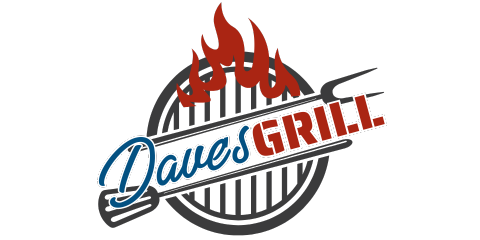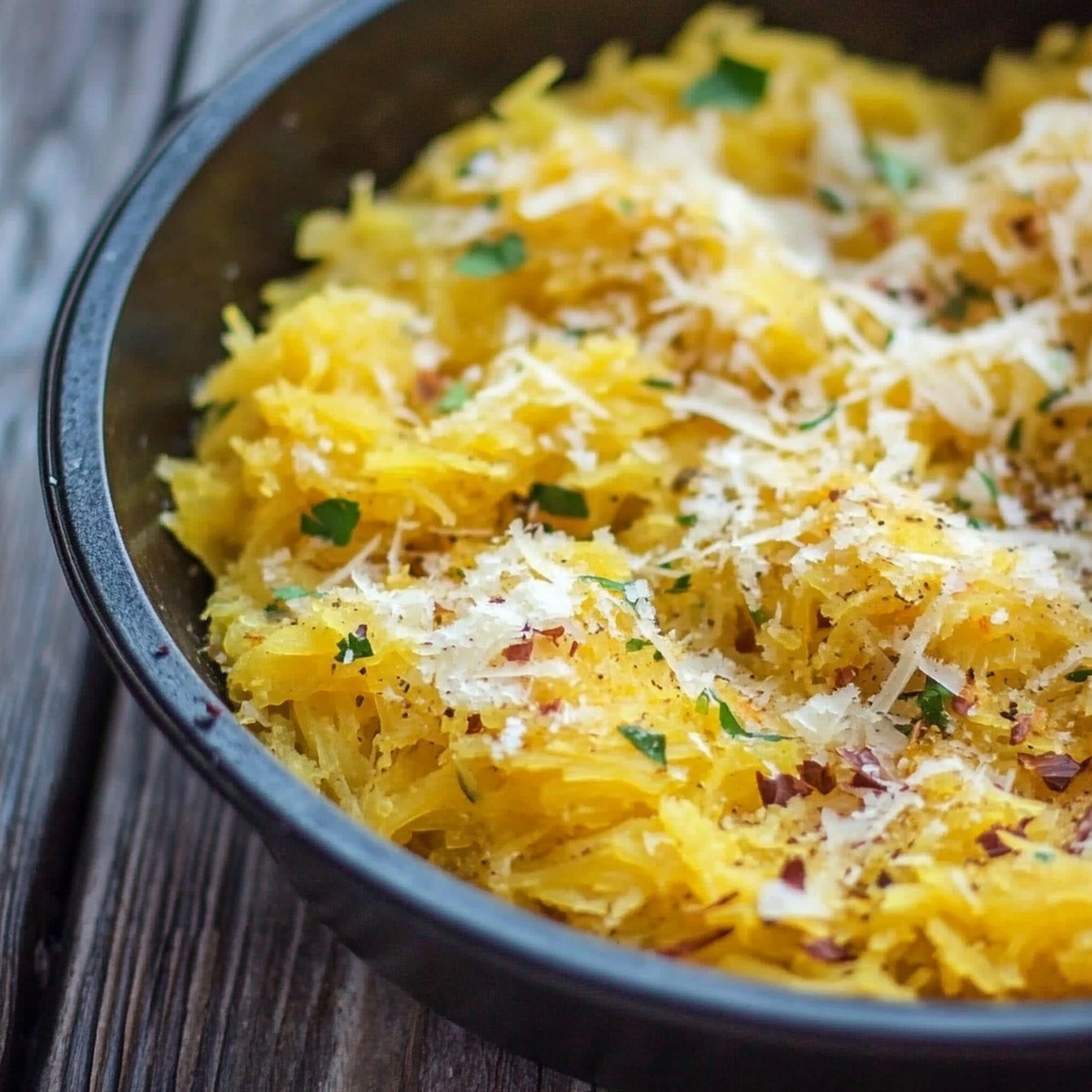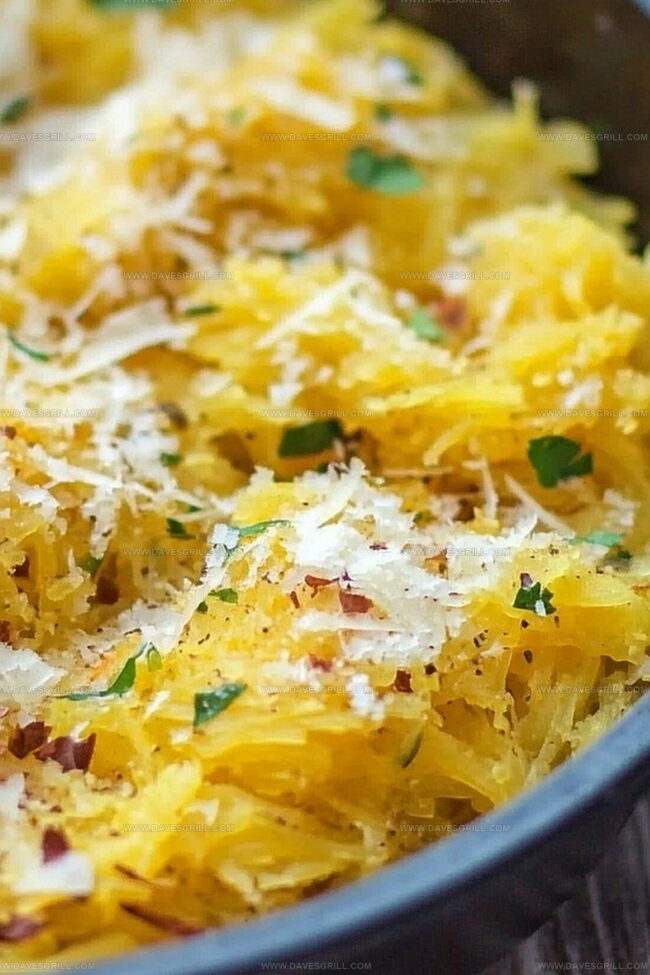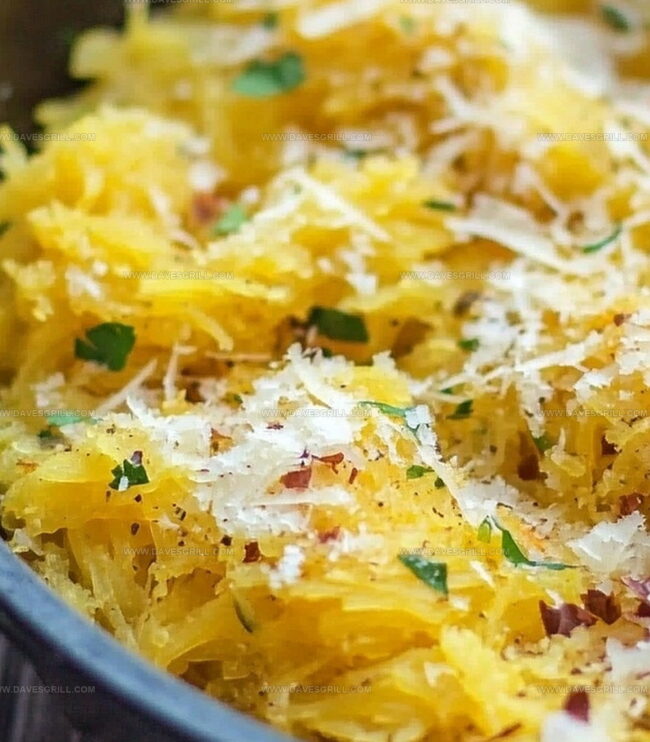Cozy Spaghetti Squash Recipe That Warms Every Heart
Tucking into a hearty spaghetti squash can revolutionize your comfort food approach with minimal effort.
My kitchen adventures have proven this veggie transforms traditional pasta expectations dramatically.
Curious cooks appreciate how simple ingredients create remarkable meals without complicated techniques.
Nutritious and light, this squash delivers robust flavors that satisfy without heaviness.
Roasting brings out incredible caramelized notes that make each bite memorable.
Weeknight dinners become stress-free when you master this versatile vegetable trick.
This recipe promises a delightful culinary journey that will make you rethink pasta alternatives completely.
Why People Like Spaghetti Squash
What Goes In Spaghetti Squash
Squash Ingredients:Seasoning Ingredients:Optional Topping Ingredients:Steps To Cook Spaghetti Squash
Step 1: Warm Up The Oven
Crank up your oven to a toasty 400°F (200°C). Grab a baking sheet and line it with parchment paper or aluminum foil for easy cleanup.
Step 2: Slice And Prepare Squash
Grab a sharp knife and carefully split the spaghetti squash right down the middle lengthwise. Use a spoon to scoop out all those slippery seeds and stringy bits from the center.
Step 3: Dress And Roast The Squash
Grab your favorite olive oil and give each squash half a generous drizzle. Sprinkle some salt and pepper to wake up those flavors. Flip the squash halves so the cut side is facing down on the prepared baking sheet. Slide the tray into the oven and let it roast for 35-45 minutes. You’ll know it’s ready when you can easily pierce the flesh with a fork.
Step 4: Transform Into Spaghetti Strands
Let the squash cool down for a few minutes so you don’t burn your fingers. Then take a fork and start scraping the inside of the squash. Watch the magic happen as the flesh transforms into beautiful, pasta-like strands!
Step 5: Get Creative With Toppings
Now comes the fun part! Serve your squash strands as is, or jazz them up with:Enjoy your healthy, low-carb “pasta” that’s packed with nutrients and flavor!
Simple Tips For Spaghetti Squash
How To Store Spaghetti Squash
Great Pairings For Spaghetti Squash
Spaghetti Squash Add-In Ideas
Spaghetti Squash FAQs Explained
Spaghetti squash is a unique vegetable that naturally forms pasta-like strands when cooked. When you scrape its flesh with a fork after roasting, it creates noodle-like strands that look just like spaghetti but are much lower in carbs.
Absolutely! It’s incredibly nutritious, low in calories, and packed with vitamins like vitamin C, vitamin B6, and manganese. It’s also a great gluten-free and low-carb alternative to traditional pasta for people watching their diet.
The squash is ready when you can easily pierce the flesh with a fork and the strands separate easily. When you scrape the inside, the strands should come out smoothly and look like spaghetti noodles without any resistance.
No, spaghetti squash must be cooked. Raw squash is hard, tough, and difficult to digest. Roasting not only softens the flesh but also brings out its subtle, slightly sweet flavor and creates those signature pasta-like strands.
Print
Spaghetti Squash Recipe
- Total Time: 50 minutes
- Yield: 4 1x
Description
Creamy Mediterranean spaghetti squash brings Mediterranean sunshine to dinner tables with its tangy herbs and rich flavors. Each forkful promises a delightful journey through fresh ingredients that satisfy both health-conscious and comfort food enthusiasts.
Ingredients
Main Ingredients:
- 1 medium spaghetti squash (about 2.53 lbs / 1.15 kg)
Fat/Seasoning Ingredients:
- 12 tablespoons (180 ml) olive oil
- Salt, to taste
Garnish/Optional Ingredients:
- Black pepper, to taste
- Garlic powder (optional)
- Grated Parmesan cheese (optional)
- Fresh herbs (optional)
Instructions
- Prepare an oven rack in the middle position and heat to 400F (200C), lining a rimmed baking sheet with parchment paper or aluminum foil for easy cleanup.
- Place the spaghetti squash on a stable cutting board and carefully slice it lengthwise using a sharp chef’s knife, ensuring even halves. Remove the seeds and stringy pulp using a sturdy spoon, creating a clean interior surface.
- Generously drizzle extra virgin olive oil across the exposed squash flesh, then sprinkle kosher salt and freshly ground black pepper to enhance natural flavors. Arrange the squash halves with cut sides facing downward on the prepared baking sheet.
- Roast the squash in the preheated oven for 35-45 minutes, monitoring the tenderness by piercing the skin with a fork. The flesh should easily yield and separate into spaghetti-like strands when gently prodded.
- Remove the baking sheet from the oven and allow the squash to cool for 5-10 minutes, making it safe to handle. Using a sturdy fork, drag the tines across the interior to create delicate, pasta-like strands.
- Transfer the squash strands to a serving platter and customize with your preferred toppings such as marinara sauce, homemade pesto, grated parmesan cheese, or grilled chicken for a complete meal.
Notes
- Slice the squash carefully using a sharp, sturdy knife to prevent slipping and ensure clean, even cuts.
- Use a large metal spoon to easily remove seeds, scooping from the center outwards for clean removal.
- Brush olive oil generously to enhance caramelization and prevent the squash from drying out during roasting.
- Check doneness by piercing with a fork – the strands should separate easily and feel tender without being mushy.
- Experiment with different seasonings like garlic powder, Italian herbs, or red pepper flakes for added flavor complexity.
- Transform this low-carb alternative into a complete meal by mixing with roasted vegetables, grilled chicken, or crumbled feta cheese.
- Store leftover squash strands in an airtight container for up to 5 days, reheating quickly in a skillet or microwave.
- Prep Time: 10 minutes
- Cook Time: 40 minutes
- Category: Dinner, Lunch
- Method: Roasting
- Cuisine: Italian
Nutrition
- Serving Size: 4
- Calories: 300
- Sugar: 1 g
- Sodium: 0 mg
- Fat: 27 g
- Saturated Fat: 3.5 g
- Unsaturated Fat: 23.5 g
- Trans Fat: 0 g
- Carbohydrates: 10 g
- Fiber: 2 g
- Protein: 2 g
- Cholesterol: 0 mg




Dave Mitchell
Founder & Chief Recipe Developer
Expertise
Education
Asheville-Buncombe Technical Community College
Associate of Applied Science in Culinary Arts
Focus: Comprehensive training in culinary techniques, kitchen management, and menu planning, with a special emphasis on grilling and outdoor cooking.
Dave Mitchell is the heart behind Daves Grill, a cook, writer, and lover of all things grilled. He studied Culinary Arts at Asheville-Buncombe Technical Community College and spent years cooking, testing, and sharing recipes that actually work.
Dave started Daves Grill to keep things simple: one great recipe at a time. His food is bold, easy to follow, and made for real people with regular kitchens. From juicy steaks to quick sides, Dave’s recipes bring the heat without the hassle.